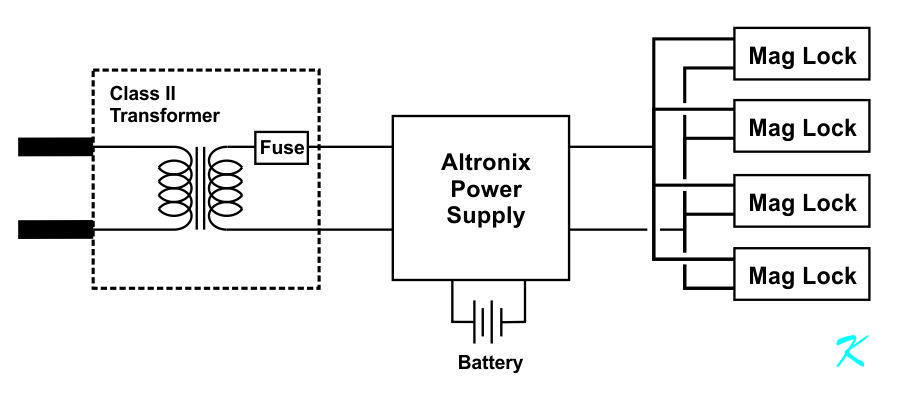There are a lot of possibilities to why the fuse inside the Class II transformer is regularly blowing.
Class II Plug-In Transformer
A transformer is made up of two wires that are close to each other. Usually, each wire is coiled, and often there is an iron core that helps to magnetically transfer power between the two coils of wire.
Class II means that the transformer has been tested. Its output voltage won't be able to electrocute anyone, and it's usually fused so that if the wires are shorted somewhere in the building, the wires won't get hot enough to start a fire. It's been tested by a testing laboratory like UL, ULC, FM, CE, DE, CCC, etc., and put on their list of Class II transformers (Listed). Beyond that, for troubleshooting purposes, the words "Class II" don't mean much.
Transformer Ratings

Yes, the Codes say that we need to be confident that the transformer we use is going to be safe (by using a Class II transformer), but the Codes don't show how to troubleshoot a system. In order to troubleshoot, a person needs to know how the system is supposed to work.
To learn a lot about how a system works, look at the ratings. The ratings show what the equipment produces or needs, and the ratings show the limits of the equipment.
The transformer is rated. The Volt/Amp (VA) rating, along with the amount of voltage, and type of output voltage (AC or DC), is stamped on the side of the transformer. These ratings tell you a lot about the transformer.
Here, there's a fuse inside the transformer, and the fuse is regularly blowing. In other words, the current being used by the load exceeds the amount that the fuse allows. If it's a 16.5 Volt AC, 40 VA transformer, it's internal fuse will blow if the current exceeds 2.5 Amps.
Like too many light bulbs, or too many other electrical devices on a household circuit will a circuit breaker, the fuse inside the Class II transformer blows if too much current is used by the load. In this case, the load is an Altronix SMP5 power supply.
Look up the specifications of the power supply on the Altronix web site at:
https://www.altronix.com/library/pdf/installation_instructions/SMP5.pdfhttps://www.altronix.com/library/pdf/installation_instructions/SMP5.pdf
Power Supply
The power supply is providing current to the four door magnets. It also uses a little current to charge the battery, and some current to operate its internal circuitry. When adding all the currents together, that becomes the total current that the power supply is using from the Class II transformer.
Something has Changed
The only reason a fuse blows is that the current is too great for the fuse.
- If the Class II transformer has been changed out to a differently rated Class II transformer, the fuse might blow. The current used by the power supply might not have changed, but the fuse inside the new Class II transformer might be smaller than the one in the old Class II transformer. If the fuse is smaller, the smaller fuse might not handle normal current.
- If the power supply has a bad component, the power supply's internal current use might have increased, and blow the fuse inside the Class II transformer.
- If the temperature is too high inside the power supply cabinet, a component in the power supply could have gone bad, increasing the current.
- If the battery is bad, it may draw too much current from the power supply, and the total power supply current may now be too high for the fuse. Remember, the average life of a battery is five years. It might be a good idea to replace the battery now, even if the battery is not causing the fuse to blow.
- If a cable to one of the magnetic door locks is shorted, it would draw more current from the power supply. The total power supply current could then blow the fuse inside the Class II transformer.
- If one of the magnetic door locks may have shorted out, that mag lock would then draw more current from the power supply. The total power supply current would then blow the fuse inside the Class II transformer.
Ohmmeter
Your ohmmeter can be used to look for some shorts, but don't count on it. There is only a small battery in your ohmmeter, and the low voltage from the battery won't detect many shorts in the system.
Also, some of the readings from the ohmmeter can be confusing.
Sometimes, the only way to troubleshoot is to isolate devices, or just replace some of the devices.
Douglas Krantz


